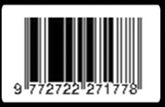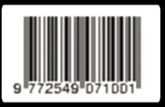Sistem E-Learning Terintegrasi Web Sebagai Solusi Dalam Meningkatkan Kualitas Pendidikan Dan Pembelajaran Mahasiswa
Abstract
Learning media is one fairly important part in the implementation of lectures, given the variety of obstacles and challenges that would be found during college. The role of instructional media is often overlooked, so that students not uncommon to feel tired and bored in a lecture which resulted in less than optimal results. Especially if the result of courses that only limited interaction in the classroom less use of media that actually existed even less than the maximum.
Web design media applications E-learning is one solution, using a web-based Java and MySQL database in the making. And using SDLC approach in its implementation, and strengthened by the questionnaire in the process of making this application.
Designing web application e-learning is intended to facilitate the process of actual lectures can be done anywhere and anytime with the data material and quiz subjects more safely and effectively stored in the application database.
Full Text:
PDFReferences
Cantoni, L. (2004). World Conference on Educational Multimedia, Hypermedia & Telecommunications. AACE , 50-5.
Cornford, J., & Pollock, N. (2003). Putting the University Online: Information, Technology and Organisational Change. Buckingham: Open University Press.
Critical issues for e-learning delivery: what may seem obvious is not always put into practice. (2008). Journal of Computer Assisted Learning , 24, 433-45.
Demidova, E., Ternier, S., Olmedilla, D., Dual, E., Dicerto, M., Stefanov, K., et al. (2005). Integration of heterogeneous information sources into knowledge resource management system for lifelong learning. Proceedings of the Ten CompetenceWorkshop. Manchester.
Global Industry Analysts, I. (2008). elearning: A Global Strategic Business Report. Retrieved Juni 05, 2016, from www.strategyr.com/pressMCP-4107.asp
J. Olin, C., John, R. B., Pieter, J. M., & Arthur, J. B. (2002). The Effectiveness of Learning Simulations for Electronic Laboratories. Journal Of Engineering Education , 81-87.
Kamarga, H. (2002). Belajar Sejarah Melalui E-Learning: Alternatif Mengakses Sumber Informasi Kesejarahan. Jakarta: Inti Media.
Koran, J. K. (2002). Aplikasi ‘E-Learning’ Dalam Pengajaran Dan Pembelajaran Di Sekolah-Sekolah Malaysia: Cadangan Perlaksanaan Pada Senario Masa Kini,. Malaysia: Pasukan Projek Rintis Sekolah Bestari Bahagian Teknologi Pendidikan Kementerian Pendidikan Malaysia.
Marc, R. (2001). E-Learning: Strategies for Delivering Knowledge in the Digital Age. USA: The McGraw Hill Companies, Inc.
Nonaka, I., & Toyamma, R. (2003). The knowledge-creating theory revisited: knowledge creation as synthesizing process. KnowledgeManagement Research and Practice , 1, 2-10.
Ojekun, A. A., & Ojedokun. (2003). Transforming the library into a teaching-learning laboratory: the case of University of Botswana Library. Campus Wide Information System , 20 No. 1, 25-31.
Robert, P., & Piper, J. (2015, Maret 23). Ukessays.com. Retrieved Juni 9, 2016, from www.ukessays.com: https://www.ukessays.com/essays/education/ict-in-developing-and-developed-countries-education-essay.php
DOI: http://dx.doi.org/10.31000/jika.v1i2.1398
Article Metrics
Abstract - 1336 PDF - 865Refbacks
- There are currently no refbacks.
INDEX BY :
 |
 |
 |
 |
 |
 |
 |










 Jurnal Of Informatics (JIKA)
Jurnal Of Informatics (JIKA) 